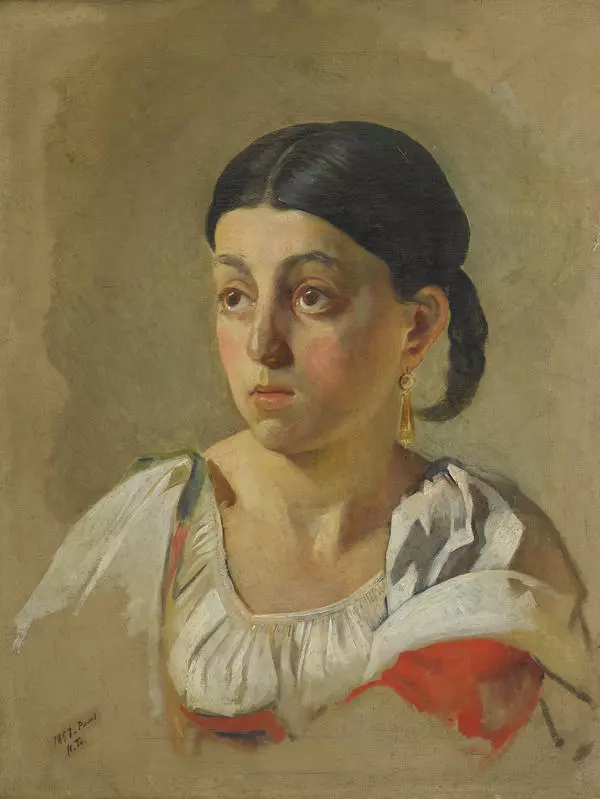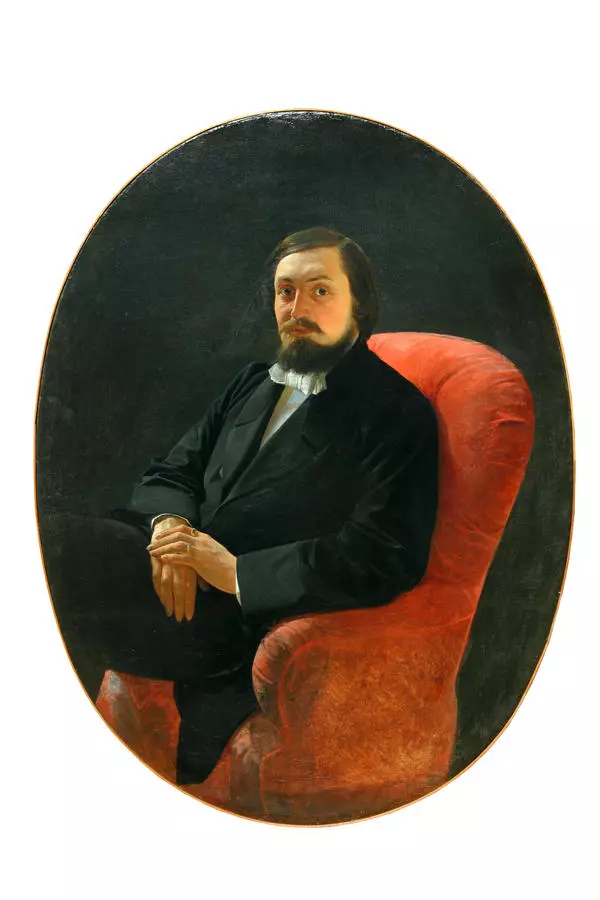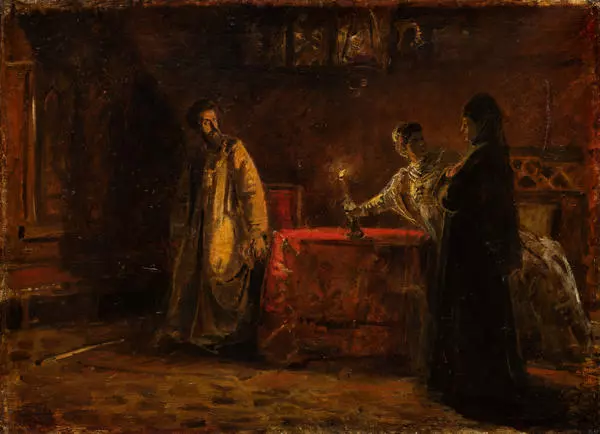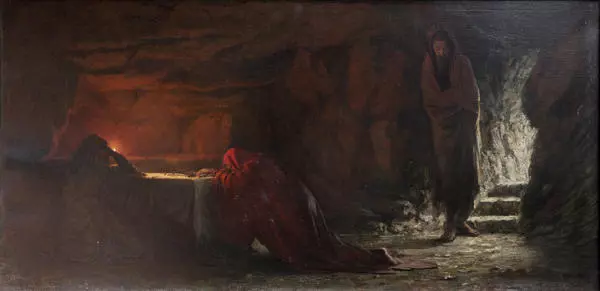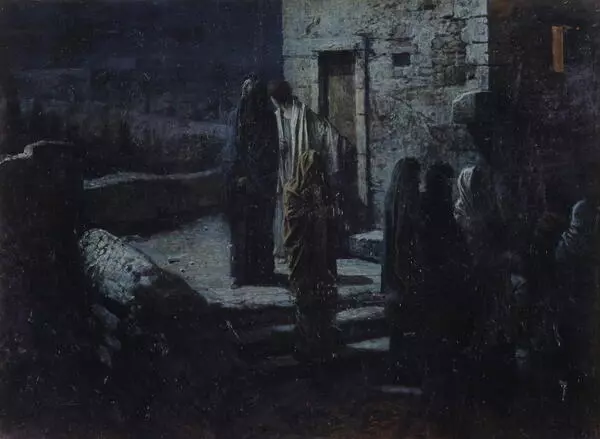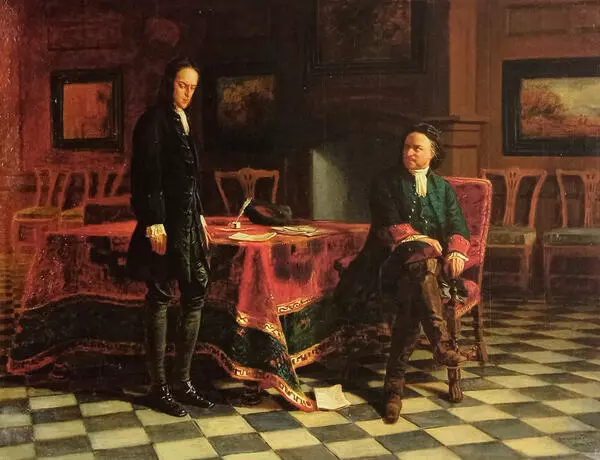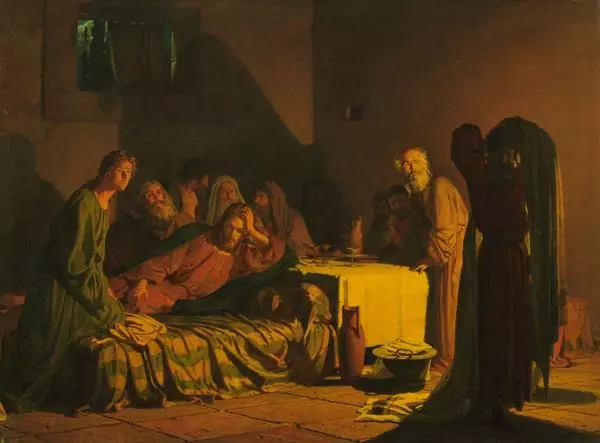The Portrait of a Young Man by Nikolai Nikolaevich Ghe exhibited at the State Museum of Fine Arts has traces of influence of Karl Bryullov.
The portrait belongs to the early period of the master’s art.
It combines an amazing simplicity of composition and the artist’s inherent skill for psychological analysis. A deep dark background, black suit and white shirt draw the viewer’s attention to the noble and spiritual expression on the model’s face.
Out of similar portrait works by the artist, considerable fame was won by his images of contemporary writers, including Alexander Herzen and Leo Tolstoy, thanks to the fact that both of them had been illustrated in textbooks.
Nikolai Nikolaevich Ghe is a Russian painter and draughtsman, who specialized in several genres, including portraiture, historical and religious painting. He was one of the founders of the Society for Traveling Art Exhibitions (Itinerants). The artist bore an exotic surname thanks to his great-grandfather, Matvey Ghe (Matieu de Gay), a French nobleman who fled to Russia like many other Frenchmen refugees for the fear of the Great French Revolution.
Despite Ghe’s close association with to the Itinerants, his own creative search goes far beyond the realm of realistic painting. Attempts to classify the artist’s creative achievements and attribute them to a certain style are doomed to fail; according to some scholars, he was always either late or ahead of both his time and his contemporaries’ tastes, thus remaining a lonely figure not only in Russian but in European art as well.
Frequently, Ghe’s expressive personal manner, particularly in presenting the Gospel themes, seemed to be inept and careless for contemporaries; however, from a retrospective point of view, Nikolai Ghe is perceived as a brilliant innovator. The dramatic range of colors in Ghe’s late art anticipated that of Mikhail Vrubel. It is interesting to note that these artists were related.
In the early period of his creativity, Nikolai Ghe tried to imitate the style of Karl Pavlovich Bryullov and often made copies of his works. In the art of portraiture, it is Ghe who became the successor of this great master’s traditions.
While studying at the Academy of Fine Arts, Nikolai Nikolaevich won the Academy’s gold medal and received a scholarship to Italy. The result of his travel abroad was a work titled The Last Supper, for which Nikolai Ghe was immediately appointed professor, bypassing the intermediate rank of academician, which in itself was extreme rarity.
The portrait belongs to the early period of the master’s art.
It combines an amazing simplicity of composition and the artist’s inherent skill for psychological analysis. A deep dark background, black suit and white shirt draw the viewer’s attention to the noble and spiritual expression on the model’s face.
Out of similar portrait works by the artist, considerable fame was won by his images of contemporary writers, including Alexander Herzen and Leo Tolstoy, thanks to the fact that both of them had been illustrated in textbooks.
Nikolai Nikolaevich Ghe is a Russian painter and draughtsman, who specialized in several genres, including portraiture, historical and religious painting. He was one of the founders of the Society for Traveling Art Exhibitions (Itinerants). The artist bore an exotic surname thanks to his great-grandfather, Matvey Ghe (Matieu de Gay), a French nobleman who fled to Russia like many other Frenchmen refugees for the fear of the Great French Revolution.
Despite Ghe’s close association with to the Itinerants, his own creative search goes far beyond the realm of realistic painting. Attempts to classify the artist’s creative achievements and attribute them to a certain style are doomed to fail; according to some scholars, he was always either late or ahead of both his time and his contemporaries’ tastes, thus remaining a lonely figure not only in Russian but in European art as well.
Frequently, Ghe’s expressive personal manner, particularly in presenting the Gospel themes, seemed to be inept and careless for contemporaries; however, from a retrospective point of view, Nikolai Ghe is perceived as a brilliant innovator. The dramatic range of colors in Ghe’s late art anticipated that of Mikhail Vrubel. It is interesting to note that these artists were related.
In the early period of his creativity, Nikolai Ghe tried to imitate the style of Karl Pavlovich Bryullov and often made copies of his works. In the art of portraiture, it is Ghe who became the successor of this great master’s traditions.
While studying at the Academy of Fine Arts, Nikolai Nikolaevich won the Academy’s gold medal and received a scholarship to Italy. The result of his travel abroad was a work titled The Last Supper, for which Nikolai Ghe was immediately appointed professor, bypassing the intermediate rank of academician, which in itself was extreme rarity.




